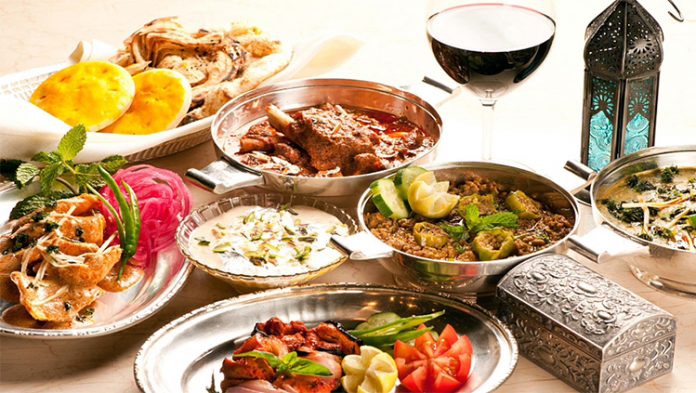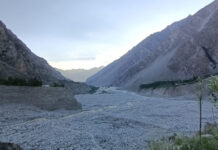Mughal cuisine is recognised the world over with their recipes followed in different styles in many eateries spread around different countries. Mughals were the symbols of excellence and this reputation was equally applicable to what they ate.
Mughal cuisine is celebrated for its aroma, taste, colour and presentation. Mughal table manners were widely emulated as they represented high sense of etiquette with the monarchs usually dining in the privacy of their household known as zenana with their consorts instead of the European custom of dining in state watched and served by their courtiers.
It was rare that emperors ate with courtiers and if they did it was on festive occasions and their presence was greatly valued.
Being originators of a specific style of eating, Mughals initiated a cooking tradition that is the richest and most lavish cuisine in the subcontinent. Mughal kitchens excelled in cooking a wide variety of lamb dishes prepared with cream, luscious fruits, and almonds served with rich pulaos. Unfortunately the geographical constraints did not allow cultivation of taste for fish or seafood.
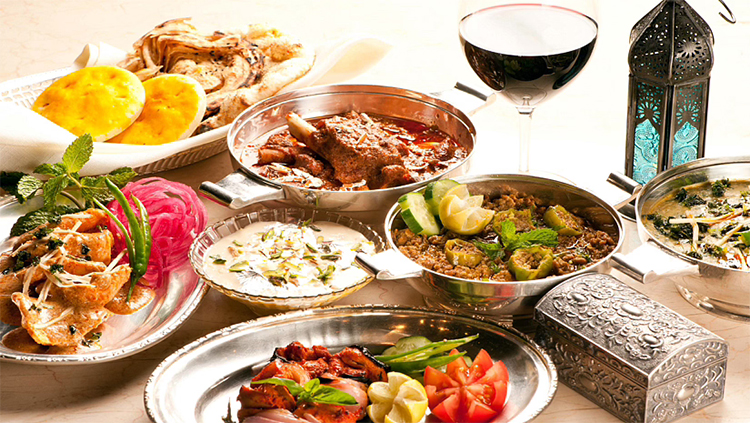
Although Mughals created mouth-watering chicken dishes but the onus of their culinary range remained on lamb.
Their new abode India encouraged them to garnish their cuisine with nuts, raisins, spices, and ghee creating meat and rice dishes (pulaos ), dressed meats (kebabs), desserts (halwa and stewed fruit), and sweetened drinks (falooda and sherbet).
They prepared new dishes exclusively with mixing meat with finely ground wheat (halim and harisa), the frozen kulfi, a rich ice cream of milk solids, and jalebi. By doing so the Mughals influenced both style and substance of Indian food and their endeavours included sharbat-i-labgir (a very sweet sherbet), naan-e-tanuk (light bread), naan-e-tanuri, samosas, mutton, the flesh of birds such as quail and sparrow, halwa, and sabuni sakar (a mixture of almonds, honey,and sesame oil).
Mughal table was an exquisite affair and matters related to its planning and execution were an exclusive and elaborate exercise. The royal physician known as Hakim planned the menu compulsorily including ingredients with proven medicinal value.
Hakim ensured that each grain of rice for the biryani was coated with silver oil, considered helpful for digestion and with additional advantage of being aphrodisiacal in nature. Mughal kitchen fed gold and silver pellets to chickens, goats and sheep so that medical properties would be passed on to the eater.
The Mughal dining was managed by an elaborate staff numbering more than two hundred that swung into action when the emperor and his retinue sat to dine with each staffer assigned a separate function.
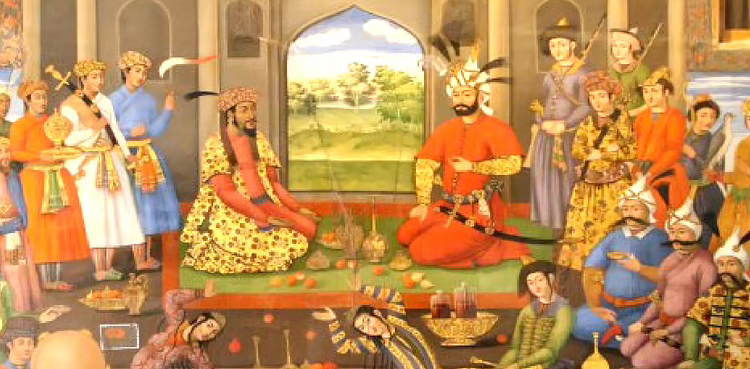
The menu required about hundred dishes to be prepared and served entailing a flurry of activity in the huge kitchen area that saw staff chopping, cleaning, washing and grinding ingredients.
Expert cooks were made to cook dishes and they competed with each other for gaining favour of the emperor who invariably rewarded the deserving.
Fresh ingredients were procured for cooking and rainwater mixed with water from river Ganges was used for bringing about best possible taste.
Mughal cuisine was the outcome of many influences reaction on it including Central Asian, Iranian and Afghani to which a touch of Kashmiri, Punjabi and Deccan was added.
Each emperor kept on adding to the repertoire of dishes: Babar loved fish which he did not get back home in Kabul, Humayun brought Iranian influence to the table due to his long stay in Persia, while Akbar, deeply embedded in matrimonial alliances, brought the Indian flavour.
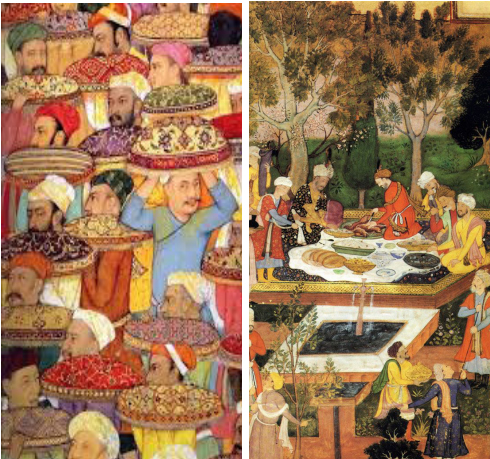
Shah Jahan is credited with adding new spices to the cuisine such as haldi, red chillies, cumin and coriander to beat negative effects of water. Aurangzeb was a casual eater preferring vegetables but he also had weakness for Qubooli, a type of mega-biryani with rice, bengal gram, dried apricot, basil, almond and curd.
Mughals ate on carpets with table settings and colourful spreads. Food was eaten with hands although knives were used to cut meat and spoons for serving.
Before eating the emperor would reserve stipulated part of food for mendicants and the unconsumed food was distributed amongst the needy. After the meal, it was customary to serve betel leaf to refresh the palate and to aid digestion.
Akbar promoted three classes of cooked dishes and the first was known as safiyana, consumed on his days of abstinence that were without meat and included khuska, khichri, lentils, palak saag, halwa and sherbets.
The second class included meat and rice cooked together, or meat and wheat prepared together such as pulaos, biryanis, shulla and shurba, halim and harisa and kashk and qutab.
The third and last class comprised of dishes of meat cooked with ghee, spices, curd, eggs such as yakhni, kebabs, dopiyaza, dumpukht, qaliya and malghuba.
Mughals preferred wheat as complement of dishes with bread served were either thick, made from wheat flour and baked in an oven, or thin, made from unleavened dough and baked on iron plates using a dough of either wheat, paratha was an adaptation of the deep-fried pooris, baqar khani (leavened bread enriched with clarified butter), whereas shirmal (a sweet baked bun-type bread) was prepared exclusively for upscale dinners.
Mughals obtained raw materials for cooking and eating from all over the subcontinent as rice was procured from Gwalior, ghee from Hissar, ducks, water fowls and vegetables from Kashmir and fruit from northwestern areas.
Cooks were specifically trained to present their food as impressively as possible. Visual effect of food was encouraged as was the colour.
The processing went through various combinations for bringing maximum lustre to the output. The Mughals introduced rich, milk-based sweets in India such as small bits of bread coated with sugar and ghee were prepared for the ceremonies of Fatiha and Niyaz.
Malida, a sweet made with broken bread, sugar, and ghee was another sweet dish which was a particular favourite of royal children.
In Mughal cuisine thickened milk replaced flour in preparation of sweet dishes. Mughals introduced a wide variety of candies and conserves particularly murabbas and achars (pickles) were commonly used.
The most popular halwas Mughals relished were sohan and habshi. Barfi originated in Persia that Humayun brought with him to India. Balu shahi, sheer khurma, gulab jamun are all legacies of Mughal cuisine.
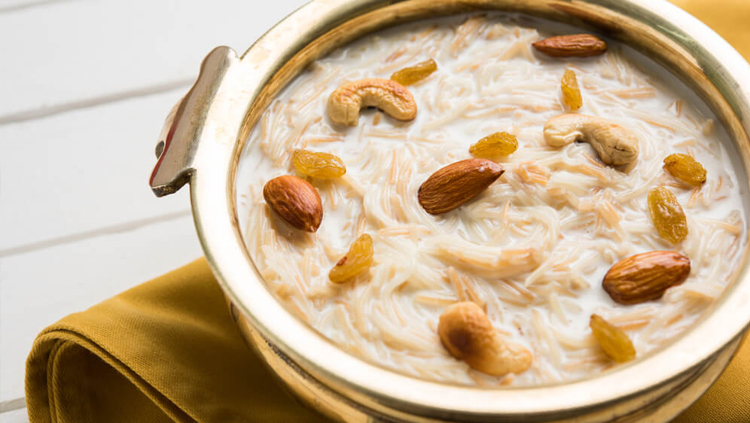
The outstanding quality of Mughal cuisine was the art of retaining the rudimentary character of a food preparation while incorporating multiple seasonings such as biryani. Two incompatible ingredients—rice and lamb—were not only marinated but also mixed with spices, curds, saffron, an aromatic mixture of spices.
Although Biryani has been modified over time but its basic formula holds good as that of another Mughal speciality, kebab that takes its shape after multiple processing of lamb, which is minced, steamed and in the process.
The kebab family is proud of its two outstanding varieties: shammi kebab and nargisi kebab.
The Mughal emperors were very fond of betel leaf (paan) and two betel leaves formed one bira that contained a spread of katha, choona and supari.
Offering paan was a royal favour whose ingredients such as camphor and musk sweetened breath and were pleasant to chew. The tradition continues to the day although new varieties have emerged.
















